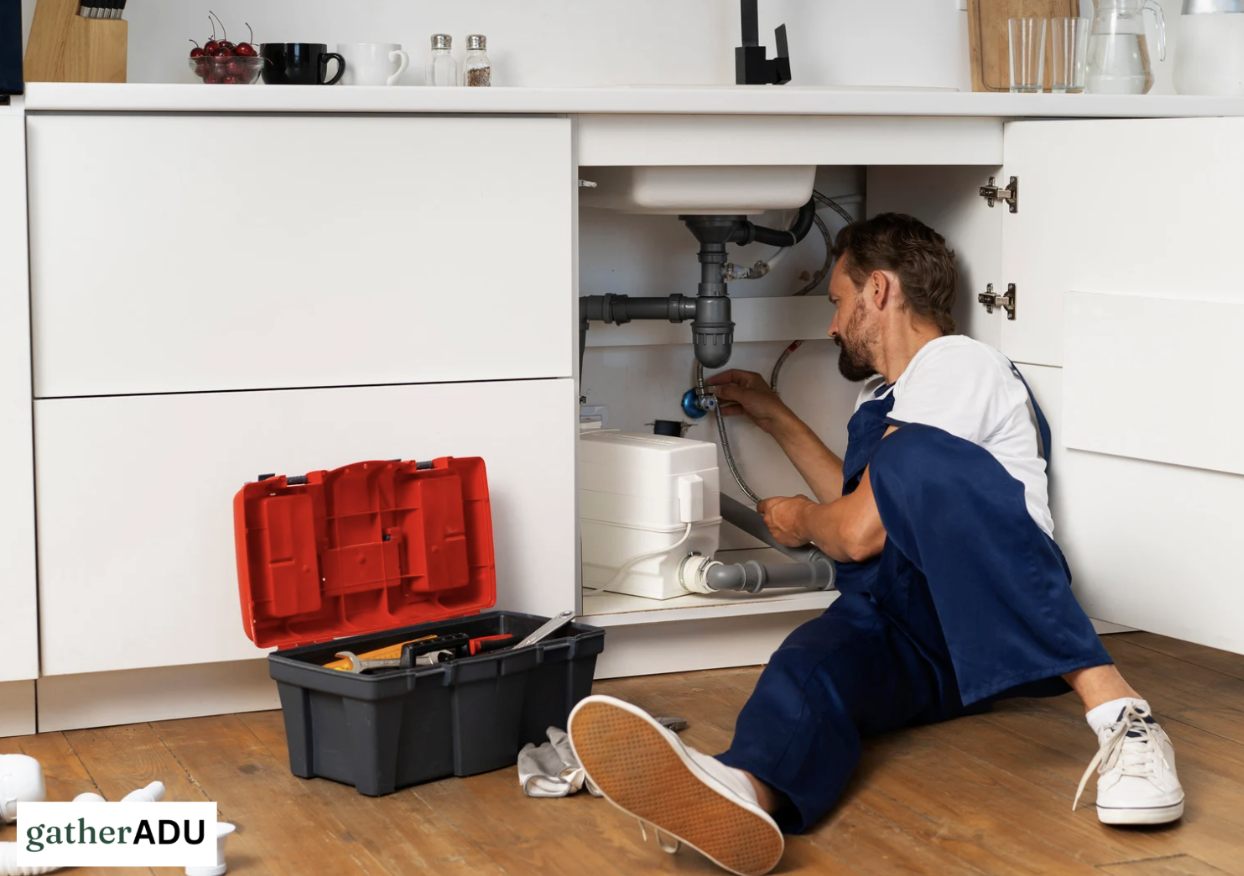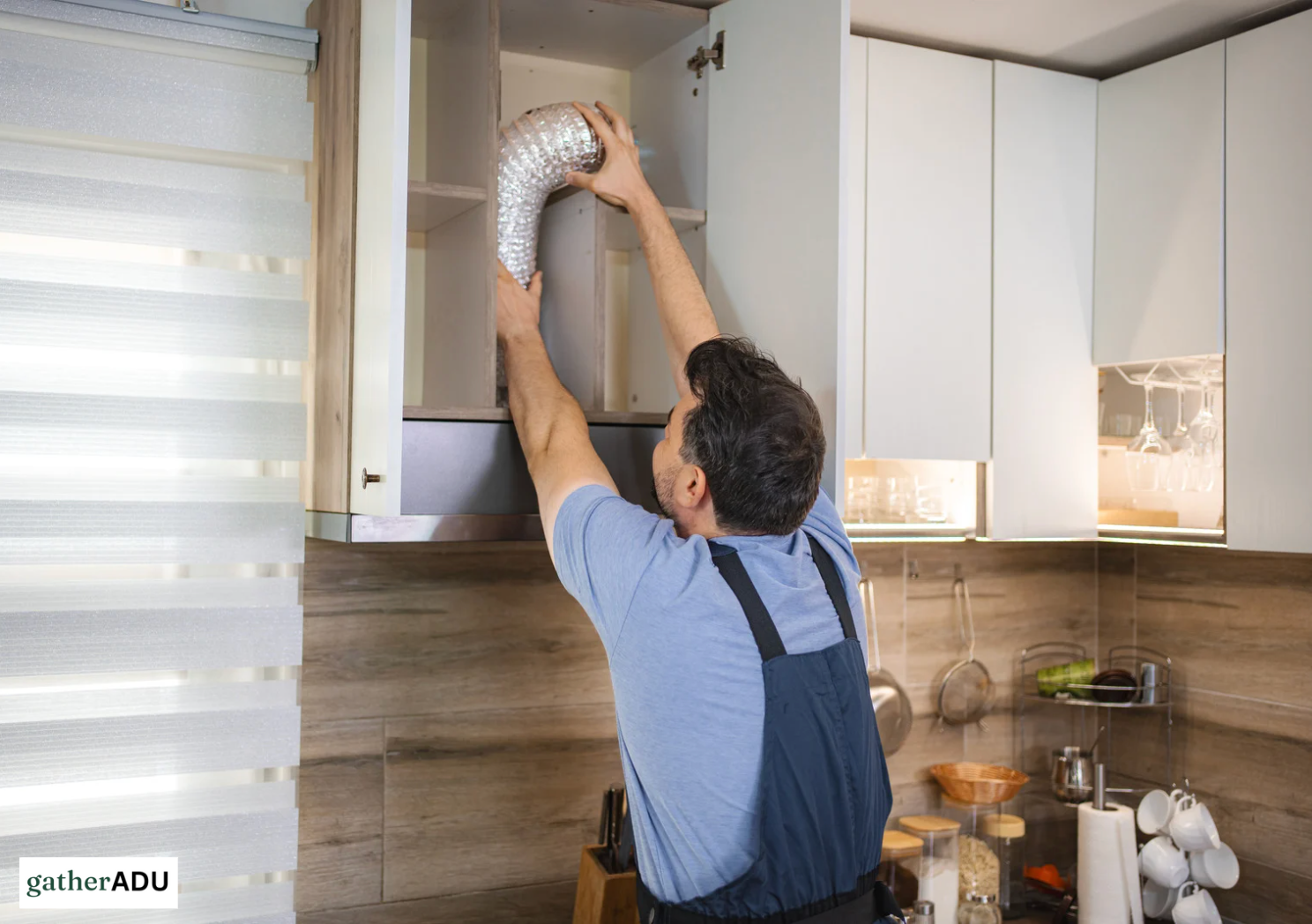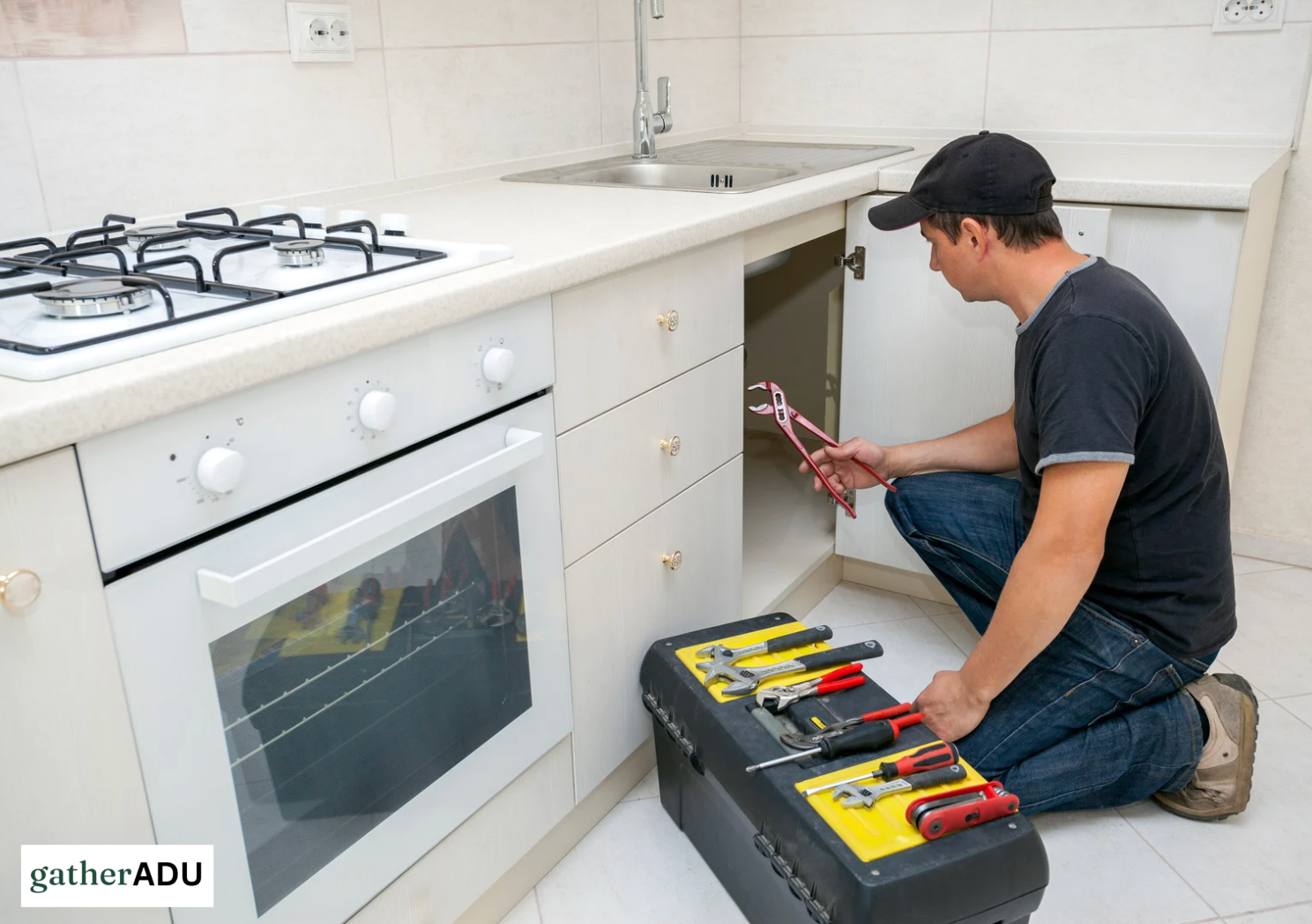ADU Plans
October 6, 2025
Ventilation & Plumbing Considerations in California ADU Kitchen Designs

.png)
Schedule a free appointment with one of our ADU experts.
Get ADU QuoteOr call: (323) 591-3717
Designing an ADU kitchen involves more than just style; it requires functionality, safety, and compliance with California’s stringent building standards. A GatherADU expert ensures that ventilation and plumbing systems are seamlessly integrated, promoting efficiency, comfort, and long-term reliability while enhancing the overall design and livability of compact kitchen spaces.
Whether your ADU serves as a rental or personal retreat, early attention to ventilation and plumbing is essential. Proper planning prevents moisture buildup, drainage issues, and costly modifications later. With expert guidance, your kitchen remains compliant, energy-efficient, and in complete alignment with California’s housing codes and climate conditions.
Ventilation is vital in maintaining clean air, preventing moisture buildup, and removing lingering cooking odors. In compact ADUs, limited airflow makes this even more essential. Designers incorporate mechanical systems, ducted range hoods, and strategically placed windows to ensure consistent air circulation and a healthier indoor environment year-round.
A properly ventilated kitchen minimizes humidity, protecting surfaces, finishes, and appliances from long-term damage. It enhances comfort and prevents mold growth while maintaining balanced indoor temperatures. For California’s warm, dry climate, adequate ventilation ensures smaller ADU kitchens remain fresh, efficient, and comfortable for everyday cooking and living.

In small ADU kitchens, effective airflow is essential for comfort, cleanliness, and energy efficiency. Designers employ innovative ventilation strategies that enhance circulation while maintaining a quiet, balanced, and visually cohesive space.
Here’s how designers optimize airflow in compact kitchens:
Plumbing placement shapes both the function and flexibility of an ADU kitchen. Designers carefully map the location of supply lines, drains, and vents to ensure efficiency, safety, and compliance with California codes. This precision supports reliable performance and smooth integration with the overall design layout.
Thoughtful plumbing planning prevents leaks, pressure inconsistencies, and costly repairs. By collaborating with an ADU design expert, homeowners ensure that pipes and fixtures connect seamlessly to the property’s central system. This proactive approach maintains accessibility, improves long-term functionality, and protects the kitchen’s structural and aesthetic integrity.

Efficient plumbing design is essential in compact ADU kitchens. By aligning fixtures and simplifying pipe routes, designers reduce installation costs while freeing up valuable storage and workspace.
Here’s how innovative plumbing layouts make a difference:
Balancing beauty and performance is essential in every ADU kitchen. Designers skillfully hide vents, pipes, and ductwork behind cabinetry or soffits to maintain a sleek, organized appearance. This concealed approach preserves visual harmony while ensuring ventilation and plumbing systems operate efficiently within a modern, minimalist layout.
Durability meets design through the careful selection of materials and finishes. ADU designers select moisture-resistant surfaces and heat-tolerant elements that withstand everyday wear without compromising elegance. The result is a kitchen that blends lasting functionality with refined aesthetics, offering homeowners both practicality and timeless visual appeal in compact living spaces.
Ventilation and plumbing issues are among the top causes of project delays and added costs for homeowners. Inadequate airflow or poor pipe placement can lead to compliance issues, moisture damage, or costly redesigns that delay your ADU completion.
At GatherADU, we streamline every stage of your project from layout to compliance, ensuring your ADU kitchen meets all California ventilation, plumbing, and building standards. Our design experts combine creativity with technical accuracy to deliver functional, elegant, and code-compliant spaces that are both visually appealing and durable.

Limited space restricts airflow, making it harder to remove moisture and odors. Proper ventilation ensures clean air, reduces humidity, and prevents long-term damage to cabinetry, walls, and finishes, keeping the kitchen fresh, healthy, and comfortable for daily use.
Yes, when properly designed and permitted. ADUs can connect to the main home’s plumbing system. Still, accurate line sizing, pressure control, and inspections are required to comply with California building codes and ensure long-term performance and reliability.
Ducted range hoods are ideal for removing heat and odors; however, ductless options with filters are also effective when outdoor venting isn’t possible. Designers assess kitchen layout, size, and energy requirements to select the most efficient, compliant solution.
Designers minimize plumbing noise by using insulated walls, flexible piping, and strategically spacing lines. These techniques reduce vibration and sound transmission, ensuring a quieter, more relaxing kitchen environment even in smaller, shared ADU living spaces.
Yes, plumbing work in ADUs typically requires separate permits. Licensed professionals handle design coordination, system layout, and inspections to ensure all plumbing meets California’s safety, environmental, and building standards before final approval and construction.
.png)
Not sure where to start with your ADU project?